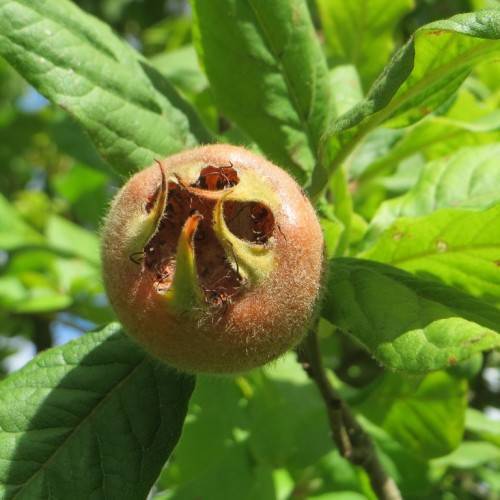
medlar
Mespilus germanica
Cycle:
Perennial
Watering:
Average
Hardiness Zone:
5 - 8
Flowers:
Flowers In Summer
Sun:
Full sun, Part sun/part shade, Sheltered
Soil:
Humus rich, Well-drained
Fruits:
Fruits In Summer Ready In Fall
Edible:
Yes
Leaf:
Yes
Growth Rate:
Moderate
Maintenance:
Low
Care Level:
Medium
watering
Medlar (Mespilus germanica) should be watered once a week during the growing season (spring through fall), providing 1-2 inches (2.5-5 cm) of water. During the winter, water should be applied every month, providing only enough water to keep the soil slightly moist. Keep in mind that Medlar plants are adapted to dry conditions, so make sure not to overwater.
sunlight
Medlar (Mespilus Germanica) plants need at least 6 hours of direct sunlight per day, ideally during the early morning and late afternoon. This will enable the plant to photosynthesize and produce the energy needed to grow and remain healthy. If medlar plants don’t receive enough sunlight, they become weak and have limited fruit production. Like many fruit trees, directshine from the early morning gives the plant a much-needed energy boost for the day. The rest of the day should be in part shade or indirect light to avoid burning or drying out the foliage. As an added layer of protection during the hottest periods of the day, leaf canopies and trellises can be used for some added protection and shade.
pruning
Medlar (Mespilus germanica) should be pruned in late winter or early spring. Pruning should specifically be done before the flowers appear. This allows plenty of time for the new growth to develop and fill in any gaps in the canopy of the tree. Light pruning should be done annually to maintain shape and promote fruiting, while heavier pruning can be done every 5 years to thin out the canopy and encourage the tree to generate new shoots and fruit production. Care should be taken when pruning, as too much pruning will reduce flowering and reduce its bearing of fruit.
